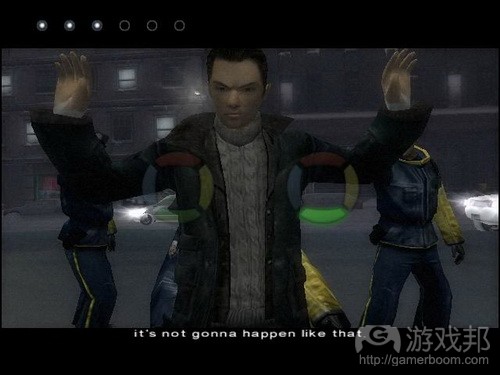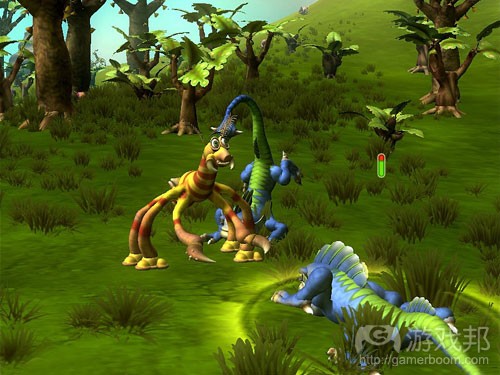电影《阿凡达》带给游戏设计师的启示
作者:Brice Morrison
《阿凡达》近来成为有史以来第二受欢迎的电影,仅次于詹姆斯·卡梅隆之前的巨作《泰坦尼克号》。最初观看预告片时,我还心存怀疑,但其票房数据让我不得不对之改观,最终亲自进入电影院观看,影片显然没有让我失望。
这部成功影片着实成绩显著;不论你是否是西方反主流主义的一份子,你都不得不承认电影能掳获全球如此多人的芳心绝非易事。其特效和画面都十分激动人心,还有故事情节。我们很快将就此展开论述。
若游戏设计师希望通过美轮美奂的画面效果吸引众多玩家的眼球,那么《阿凡达》是个值得借鉴的作品。虽然卡梅隆的杰出有很多可供借鉴的地方,但有两大方面令我印象深刻,我觉得非常值得当前游戏发展参考。我特别推荐独立开发者阅读如下分享。
无需始终保持原创
我更年轻,更年少无知的时候,常认为想要创作优秀作品,设计杰出游戏,讲述有趣故事,就必须保持原创。我所有构思都要是他人所没有的。如果有人制作第一人称射击游戏,那么我就设计2D益智探险混合游戏。如果整个行业都在讲述爱情故事,那么我就来描述存在主义。就像他们说的,同别人背道而驰。
《阿凡达》的故事、情节脉络和角色都不是原创。我最初听到该电影时,对它丝毫不感兴趣,因为其题材几乎是陈腔滥调。邪恶人类希望从纯洁而几近神圣的原住民那掠夺资源。战争随之而来,原住民在这场史诗般的战斗中输输赢赢,最后以险胜告终。其中有浪漫故事、有背叛、有十恶不赦的首领角色。其参考作品中少不了《Put Pocohontas》和《Fern Gully》。当我自己观看影片时,剧情完全在我的意料之中。故事丝毫没有悬念,画面一点儿也没让我瞠目(除影片音效和潘多拉星球),整部电影完全就在意料之中。
但是,这就是区别所在,电影并非原创,但却大受欢迎。故事题材同热门主题密切联系,电影因此能够深入数百万影迷心中(游戏邦注:有些主题更鲜明,更原始的作品都无法获此成就)。原型主题对人类经历来说至关重要,这也是为什么它们常常出现在故事和生活当中。正是由于这些非原始的普遍题材,该电影才能够获此成绩。从这点来看,我希望将此题材称作普遍主题,而不是非原创,这样更有正面含义。
启示:放弃自我意识,别再做原创的奴隶。
始终保持原创之所以为下策,有两个原因。首先,没有什么东西是真正的原创;你可以反驳,但必输无疑。是的,也许有些观点和概念是你从未听过或不熟悉的,或者有些观点已经为公众所遗忘,所有事物从某些角度看都是建立在其他事物基础上的。如果该事物没有此特性,那么也就失去意义,因为它不是源自现实生活。题材和观念只是用于设计故事情节。
其次,保持原创是个不成熟的立场。当有人表示他想要原创,他其实是说他不想做和他人一样的事。他们希望与众不同,成为少数人,避免受多数人的领导。讽刺的是,要求原创其实让你受限于多数人,虽然是以相反的方式。如果其他人调整方向,你也要调整方向。如果多数人朝右,那么你就得朝左。你没有自由意志或选择,你完全处在受控制当中。
设计师(游戏邦注:或者任何艺术家)充当原创奴隶其实百害而无一利。最好能够具体问题具体分析,从而决定你的作品是具有原创,还是保持普遍性,而不是破坏游戏核心体验。你是否要添加门把手旋转基础机制,让玩家穿过建筑时感受到门把手的旋转?或者是否需像所有游戏那样,让把手自动开门?你是否希望玩家只有一次体验机会,然后就完全结束?这或许具有原创性,但却会令人感到沮丧,让人颇感紧张。我们最好还是像其他游戏那样,采用生命机制。
就像你看到那样,拘泥原创最终只会破坏游戏。更明朗的是,我们应该选择合适发展路线:或坚持原创,或保持普遍。
故事情节要融入情感
《阿凡达》中很多感人画面拨人心弦。从与原住民一同反抗调查人员,到在她面前破坏森林,Neytiri意识到杰克帮助她的部落动机不纯。潘多拉星球的人物演绎所有情感:爱、恨、浪漫、恐惧、震惊、悲痛和欢乐。
这些画面如何变得富意义?许多游戏设计师都试图以相同方式让游戏角色和场景获得我们的情感共鸣。这些都是故事叙述常有的元素。影片《阿凡达》在其162分钟中表达得淋漓尽致。那么其中关键是什么?
首先是角色的塑造。我知道他们的背景、历史、愿望和梦想。我们和他们共度时光。对于影迷或游戏玩家来说,同角色建立情感联系十分重要。这需要花费时间。表面看似无意义的画面其实旨在让观众进入到角色内心,从而撼动你的灵魂。
若忽视角色塑造基本原则会出现什么情况?
在2005年的视频游戏《幻象杀手》中,玩家需要做出生死攸关的选择。总的来说,就是玩家或选择需救小孩,让其免于陷入冰冻湖面,向敌人曝露自己的行踪,或选择自己跑掉,让小男孩自生自灭。面临此选择,我通常跑掉,让小男孩溺水身亡,避开主角敌人的视线。
在这个决定中,我是否十分冷酷无情?或许有点,但我敢保证所有玩家都会做出相同决定。为什么?这是归根于游戏的呈现方式。这个男孩不知从何处冒出来,对主角和玩家来说他是个陌生人。但我的角色Lucas Kane却是个发展完善的人物,我已在这个角色上花费很多时间,我了解他的故事,日渐同他建立密切关系。这样的情感偏差让我很自然做出如此决定。是救素不相识的人物,还是救我深爱的角色?我只有一个选择,不论这是否符合开发商的预期。
我从《阿凡达》中了解角色、了解他们的感觉和情感。我看到他们努力抗争谋求生存。这些基本场景是情感起伏的构建模块。这些构建模块将影片推向艺术高度和情感深度。
启示:不要奢望玩家会轻易与角色同喜同悲,建立他们之间的情感联系是关键。
电影强大震撼带给我们的第二大启示在于纳威人的真实感。我和很多其他影迷一样,被潘多拉星球原住民的真实感深深震撼,虽然我知道他们不可能是真的。通常诸如此尝试不可能在诡异的峡谷实现(游戏邦注:是指人类真实感由于过于刻意而失败)。模拟人类面部表情是个聪明的策略。99%相似度都是不够的,这会让观众产生厌恶之情。
詹姆斯·卡梅隆表示,他多年来一直在等待技术成熟,制作他理想的阿凡达形象。他显然已等到时机成熟。纳威人看到自己家园树木倒塌的眼神着实令人难以忘怀。若人物没有看起来如此真实,就会像糟糕迪斯尼电影产生的观感。
虽然复古大像素和卡通艺术风格在游戏发展中不可或缺,但不幸的是,开发者将很难让玩家同系角色建立联系,就像他们同其他人类之间的联系一样。这也是为什么玩家能够轻易在《模拟人生》中同家人建立联系,而却无法同《Spore》生物产生共鸣。若你的场景不够栩栩如生,那么人类天然的情感因素将无法形成。
这不仅就人物发展而言,许多联系亦是如此。Capcom推出其首款《生化危机》(游戏邦注:这是当时唯一再现现实场景,而非类呈现尽可能逼真画面的游戏)时就深谙此道。他们采取聪明策略,绘制2D画面,而非90年代粗糙的3D婴儿食品,唤起玩家内心的恐惧感,让他们觉得自己仿佛真的置身小路中,穿过博物馆,迈向死亡。
若他们的脸看起来像卡通人物,你就不会联想到纳威人。你也不会关心他们的树木是否遭到破坏,他们的爱人是否倒下。这应该是悲伤的,但仅是就知识水平而言。为了激发观众和玩家的最初情感,一定程度的真实感和人类情感联系是不可少的。
游戏需要多大程度贴近现实才能让角色像真实人类?这取决于开发者。面部表情、声音和手势都是基础元素(游戏邦注:虽然这些可能超出独立开发商的能力范围)。创造真实感成本颇高,我们从《阿凡达》3亿多美元预算或Valve《半条命2》的团队规模就能知晓。但能够引起人类共鸣的表情或形体带来的反响非常惊人。
启示:人类不会因卡通人物而悲伤,他们只会同真人有共鸣。所以请创造尽可能真实的人物形象。(本文为游戏邦/gamerboom.com编译,如需转载请联系:游戏邦)
What Game Designers can learn from “Avatar”
by Brice Morrison
Avatar recently became the second highest grossing film of all time, bested only by James Cameron’s previous blockbuster, Titanic. I was skeptical at first when I saw the trailer, but the box office numbers pushed me over the edge and finally got me in the theater seats, and I was certainly not disappointed.
A film this successful accomplishes so much; whether you are a western anti-mainstream individualist or not, you must appreciate how difficult it is to make a single film that can touch the hearts of so many millions of viewers around the world. The special effects and artistry put into the world were of course breathtaking and the story…well, we’ll get to that in a minute.
Avatar offers some great lessons to game designers who are looking to reach a broad audience through an magnificent work of art. While there is much to learn from Cameron’s masterpiece, there are two main aspects that struck me as particularly timely to today’s game development landscape. Indie developers are especially encouraged to read on.
[Note that this post is full of spoilers. Proceed at your own risk if you haven't seen the film.]
You Don’t Have to Always Be Original
When I was younger and more foolish, I used to think that in order to create something great, to design a great game, to tell a great story, it had to be original. It had to be made up of things that no one had done before, all my own ideas. If everyone else was making first person shooters, I would make a 2D puzzle-adventure mash up. If the industry was telling stories about love, I would tell a story about existentialism. Go against the grain, as they say.
Avatar’s story, plot line, and characters are not very original. When I first heard about the film, I wasn’t interested in it at all, because it seemed so trite. Evil people want to steal resources from the pure and almost holy natives. War ensues, natives lose in the epic fight, then win, then lose, then barely win. Little romance story, betrayal, big bad boss character. Yay. Put Pocohontas and Fern Gully in the bibliography, please. And as I went to see the film, my expectations were matched. No plots twists blew my mind, no ideas made my head spin (other than the visual effects and realization of Pandora); the movie was entirely predictable.
However, and this is the difference, the movie was unoriginal but did it well. By hanging masterful directing on to popular themes, the film was able to reach into the hearts of millions of viewers, something that more niche or “original” themes would not have been able to do. The fact is that these archetypal themes are central to the human experience, which is why they show up so often in stories and in life. And it is because of these unoriginal, universal themes that the film was allowed to be so successful. In that sense, I prefer not say that it was unoriginal, but rather universal, a more positive connotation.
The moral: Let go of your ego. Stop being a slave to originality!
Needing to always be original is a poor strategy for two reasons. The first is that nothing is truly original; you can fight this idea but you will lose. Yes, there are ideas and concepts that you may have not heard of before or be familiar with, or ideas that the general public has forgotten, but everything is in some form based on something else. If it wasn’t, it would make no sense, because it would not be grounded in reality (which gets us into the ultra-original avante-garde). Themes and ideas that have come before you only add to your palette to design stories with.
Second, being original is an immature position. When people say they want to be original, what they’re saying is that they don’t want to do what everyone else is doing. They want to be different, the minority, eschew the majority’s lead. Ironically, demanding that you be original actually puts you in a position of control by the majority, albeit in an opposite sort of way. If everyone else zigs, then you need to zag. If the majority goes right, then you must go left. You have no free will or choice, you are still controlled.
Designers (or any artist, for that matter), do themselves a disservice by making themselves a slave to originality. Better to choose on a case by case basis whether your work should be original or universal than to do a disservice to your game’s Core Experience. Do you want your player to actually feel the turn of each doorknob as they walk through the building, thus implementing a heavy doorknob-turning Base Mechanic? Or should you just do what all other games do, and have them open the door automatically? Do you want the player to only have one chance to play your game, and after that it is over forever? This would be highly original, but it may also be frustrating or nerve racking. It might be better to implement a lives system, like many other games have done.
As you can see, enslaving yourself to originality can do a disservice to your game. Be brighter than that; choose the appropriate track: original or universal.
A Master Storyteller’s Take on Emotion
There are some incredibly emotional scenes in Avatar that pull at your heart strings. From the defiance of the researchers who sided with the natives to the wreckage on the face of Neytiri she realizes the Jake had ulterior motive for befriending her tribe, the characters on Pandora run the gamut of emotion. Love, hate, romance, fear, shock, horror. and joy.
How are these scenes made meaningful? Many game designers attempt to put in characters and scenes in their games that will pull at our heart strings in a similar way. These are elements of common storytelling, and Avatar in its 162 minute marathon hits all the highlights. So what are the keys?
First, the characters are developed. We learn their backgrounds and histories, their hopes and dreams. We spend time with them. This is incredibly important for a viewer of a movie or a player of a game to have time to form an emotional bond with a character. This doesn’t happen immediately. It takes time. Seemingly meaningless scenes are purposefully crafted to lure the viewer into the personalities of the characters, all for the ability to tug at your soul later on.
What happens when this basic rule of character development is ignored?
In the 2005 video game, Indigo Prophecy (Fahrenheit outside North America), at one point the player is asked to make a supposedly life-or-death choice. In summary, the player can save a young child from slipping and drowning in a frozen lake, exposing himself to enemies, or he can get away clean, letting the boy die. When I reached this point, I instantly ran away, choosing to let the boy drown while steering clear of the main character’s foes.
Was I callous in this choice? Perhaps, but I would guarantee that most players made the same choice. Why? Because of the way it was presented. The boy came out of nowhere; he was a stranger not only to the main character, but also to me the player. My character, Lucas Kane, however, had been thoroughly explored and developed. I had already spent several hours playing as him, learning his story, and growing attached to him. This uneven emotional scale made the choice a no brainer. Save an unknown stranger, or save the character that the game had taught me to love? My behavior was funneled towards only one option, whether the developers intended it or not.
In Avatar, we learn about the characters, their feelings and their emotions. We see them strive and fight and live. These foundational scenes are the building blocks of the later emotional triumphs and crises. And those building blocks pull the film up to heights of art and depth of feeling.
The moral: Don’t hand players some characters and ask them to cry. Develop a relationship that matters!
The second main lesson of the film’s raw passion is in the realism of the Na ‘vi. I, as were many other moviegoers, were struck by how the indigenous people of Pandora looked so believable, even though we knew they could not possibly be real. Usually attempts like this fail at the uncanny valley, a phrase for attempts at human realism that fail because of subtlety. Imitating human facial expression is a tricky business; even getting it 99% right is not enough and will cause revulsion in viewers.
James Cameron said that he had to wait for many years until the technology became available for him to achieve his vision for Avatar. And he certainly waited until the right time. The look in the eyes of the Na ‘vi as they watched their home tree fall to the ground was heart breaking. If they hadn’t looked so real, it would have had the emotional pull of a bad Disney movie.
While retro big pixels and cartoony art styles certainly have their place in game development, unfortunately developers will have a hard time getting players to relate to the characters as they relate to other humans. This is one of the reasons why players easily attach themselves to their family in The Sims but not to their creatures in Spore. Humans are designed to relate to other humans; everything else is a distant approximation. If your scenes are not lifelike enough, then the natural human gears and inner workings of emotions will not kick in.
This effect exists not just for character development, but for many types of engagement in general. Capcom understood this well when they launched the first Resident Evil game, one of the only titles at the time to recreate actual real-world scenes instead of a jagged polygonal approximation that was allowed at the time. By taking a clever route through painted, 2D scenes instead of half-witted 3D baby food of the 90′s, they were able to evoke real fear in players, who felt as they they really were walking down an alley, through a museum, and to their doom.
You would not have related to the Na’ vi if their faces looked like cartoons. You would not have cared when their trees were destroyed and their loved ones fell. It would have been sad, yes, but only on an intellectual level. To evoke the primal emotional in viewers and players, a degree of realism and human attachment is necessary.
How much realism is needed in a game to feel like a real human? That’s up to the developer to figure out. Facial cues, voice acting, or gestures are all a start, although perhaps out of the realm of possibility for indie developers. Realism is costly, as evidenced by Avatar’s $300+ million budget or the size of teams like Valve’s Half Life 2 team. But the results of a face or a shape that people can relate to can be astounding.
The moral: People don’t cry for cartoons. They cry for people. Give them real people as much as possible.(Source:thegameprodigy)
上一篇:商业角度思考创建游戏开发工作室










































